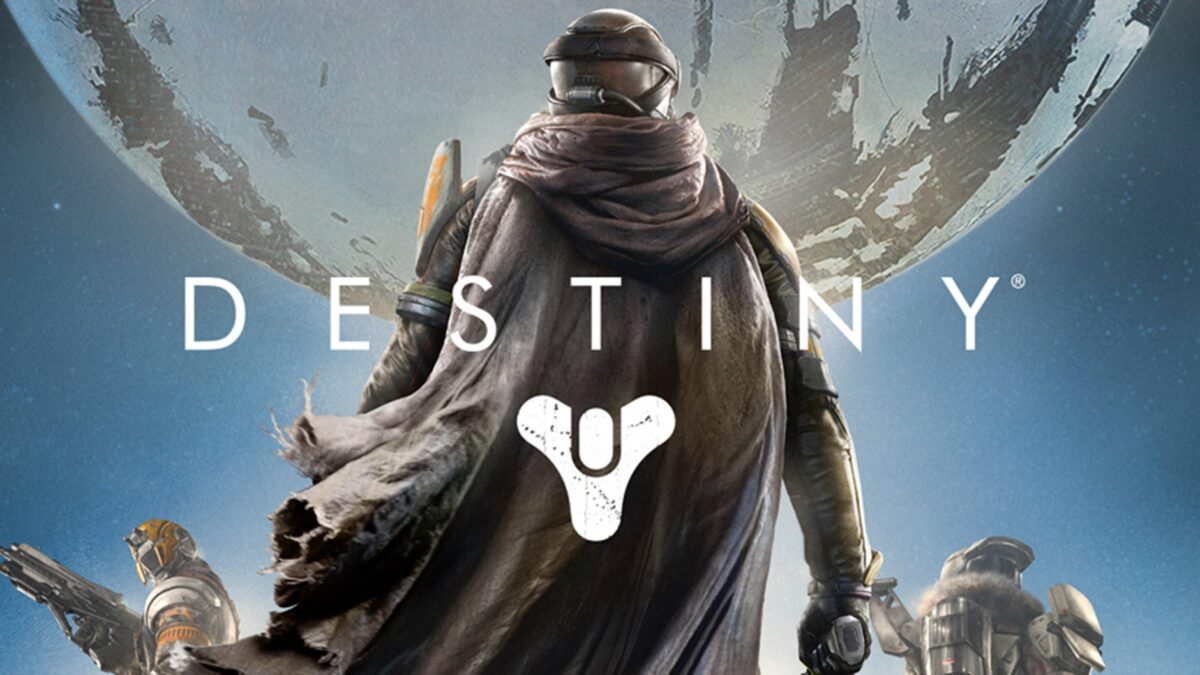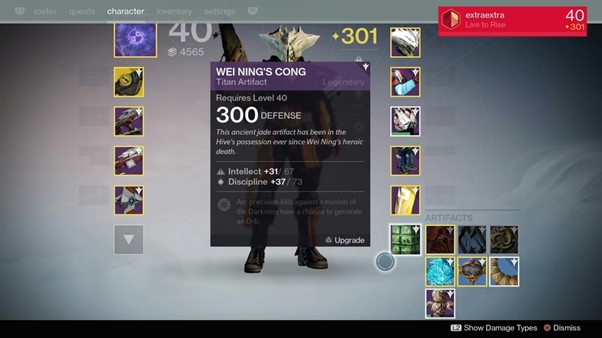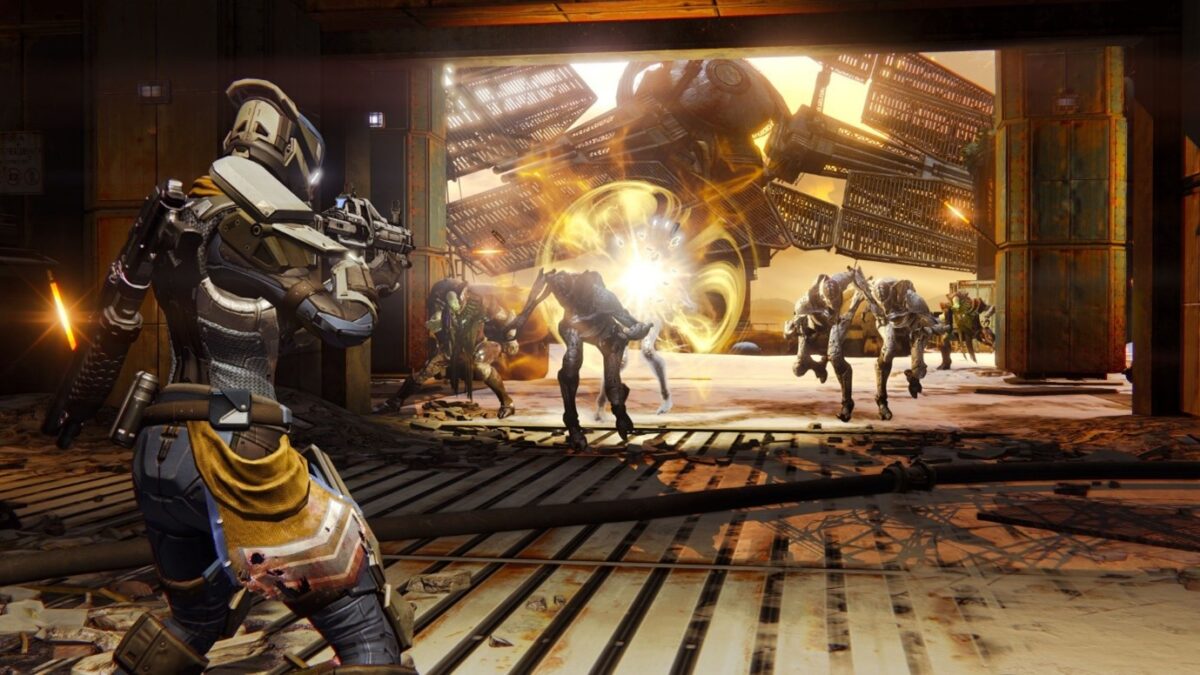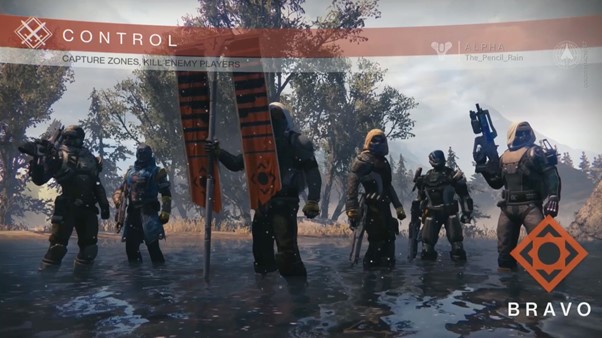The Art of Game Destiny
Destiny’s style has been described as a first-person shooter that incorporates role-playing and massively multiplayer online game (MMO) elements, but Bungie has avoided defining Destiny as a traditional MMO game. Instead, the game has been referred to as a “shared-world shooter,” as it lacks many of the characteristics of a traditional MMO game. For instance, rather than players being able to communicate with all other players in the game or on a particular server — as is the case in many conventional MMO games — Destiny includes on-the-fly matchmaking that allows players to communicate only with other players with whom they are “matched” by the game. To communicate with other players in the game world, players must use their respective console’s messaging system. Time-limited events and modes are also occasionally added or featured in-game. Activities in Destiny are divided among player versus environment (PvE) and player versus player (PvP) game types across the Cosmodrome and the Plaguelands (added with Rise of Iron) on Earth, its Moon, Venus, and Mars. There are also PvP maps for Mars’s moon Phobos and the planet Mercury. A social space on Mercury was added with the House of Wolves expansion, but requires players to go undefeated in the Trials of Osiris Crucible mode in order to access it. Another PvE area, a massive ship called the Dreadnaught that is situated in the rings of Saturn, and two PvE missions on Phobos were added with The Taken King expansion.
Players are able to improve their characters, referred to as Guardians, by gaining experience points (EXP) — when a set number of experience points are accumulated, the player’s character will “level up” and gain improved statistics which further enhance performance in battle. Quests, including the “main scenario” quest line, are specific tasks given to the player by non-player characters which reward items and EXP. Completing main scenario quests progresses the overarching plot of the game.
Destiny features three character classes. Each class has their own specific upgrades, perks, special abilities, and two sub-classes that allow the player to finely tune their individual characters to provide a different play style. After choosing a class, players select one of three species for their character: Human, Awoken (bluish-gray-skinned descendants of Humans), or Exo (humanoid machines). They can then customize their character, such as changing its gender or skin color. A character’s species is only cosmetic and does not affect gameplay. Players can create two more characters to have a character of each class.
Hunters are designed to be like a bounty hunter with a focus on agility and mobility. Its Solar-based “Gunslinger” sub-class tree includes stat boosts that award accurate play, a throwing knife attack, the ability to upgrade to a triple jump, and the “Golden Gun” super, a very powerful, flaming magnum with a base magazine of three shots. The Arc-based “Bladedancer” sub-class has a heavier focus on close combat, offering an extended-range “Blink Strike”, and an “Arc Blade” super (which allows the player to quickly dart between and kill enemies) with a temporary invisibility option. The Taken King added the Void-based “Nightstalker” sub-class that includes a bow-like super called “Shadowshot” that tethers enemies together, limiting movement and preventing enemies from using abilities for a short time.
Warlocks are designed as a mage, or a space wizard, with a larger focus on offensive abilities, recovery, and melee attacks that can reduce the cooldown time of its abilities. Its super in the “Voidwalker” sub-class, “Nova Bomb”, is an explosively powerful sphere of Void energy capable of being thrown in different ways. Its “Sunsinger” sub-class features abilities based around the Solar element, with the “Radiance” super allowing the player to temporarily improve their statistics, or revive themselves if killed. The Taken King added the Arc-based “Stormcaller” sub-class that includes the super “Stormtrance”, which produces lightning bolts that chains between enemies.
Titans are designed to be “tanks”, with a focus on withstanding large amounts of damage to allow close quarters combat. The Titan’s super in the Arc-based “Striker” sub-class, “Fist of Havoc”, is a ground slamming attack that destroys all enemies in its radius. Its Void-based “Defender” sub-class offers the ability to generate a shield with its “Ward of Dawn” super. The shield can also provide temporary stat bonuses to other players that step within it. The Taken King added the “Sunbreaker” sub-class, which features a Solar-based super, the “Hammer of Sol”, creating a flaming hammer that can be thrown at enemies, or used for close-quarters combat.
Upon reaching the max level, character progression shifts to improving their “Light” level by acquiring new and better equipment. This equipment can be gained through a variety of sources, including “strikes”, raids, and in-game events. Prior to The Taken King, all legendary and exotic armor, and some rare, contained an attribute called Light. Once players reached level 20, they no longer earned experience to level up; EXP earned after level 20 went towards upgrading weapons and armor, and creating Motes of Light, an in-game currency. Players could only go beyond level 20 by obtaining armor with Light, and these levels were referred to as Light levels. The initial Light level cap was 30, which increased to 32 with The Dark Below and 34 with the House of Wolves. Update patch 2.0, released in preparation for The Taken King, made the character’s experience level and Light level separate: level 34 is now the experience level cap for all players; level 40 for players who own The Taken King and Rise of Iron. A higher character level allows for better equipment to be equipped. A character’s Light level is now an average of the attack and defense of all equipped gear. For example, if all equipped gear has 170 Light each, the character’s Light level will be 170. A higher Light level improves damage output and defense. The highest obtainable Light level was 320 for players who owned The Taken King; the expansion’s April Update increased it to 335. Rise of Iron increased the highest obtainable Light level to 400.
Players’ equipment includes weapons and armor. Legendary and exotic items are the best items for players’ characters, and only one exotic weapon and one exotic armor (excluding exotic class items) can be equipped at one time. There are several different classes of weapons that are categorized as either a primary, special (secondary), or heavy weapon. Several weapons have an elemental damage type. There is Arc (blue), Solar (orange), and Void (purple). All damage types will deplete enemy shields of that type faster, and the weapon will also do extra damage to enemies if the gameplay modifiers ‘Arc Burn’, ‘Solar Burn’ or ‘Void Burn’ are active. The original maximum attack damage for legendary and exotic weapons was 300. This increased to 331 with The Dark Below and 365 with the House of Wolves. As with armor, weapons’ attack damage contributes to the Light level and all gear can be infused to increase their numbers.
There are six armor slots: helmet, gauntlets, chest, legs, class item, and artifact. Each class has armor specific to them with exotic armor that compliment a character’s sub-class. Each piece of armor increases overall defense. Before The Taken King, class items were only cosmetic and did not have any stat or defense boosts. Class items now have defense that contributes to players’ Light level. Players’ Ghost companion now also has defense that contributes to their Light level. In addition to earning gear from loot drops by playing missions and other activities, players can purchase gear from faction vendors. Players can pledge their allegiance to one of three factions — Dead Orbit, Future War Cult, or New Monarchy — and earning enough reputation with a faction allows players to earn and purchase that faction’s legendary items. Players also earn reputation with other vendors, such as the Vanguard and Crucible, by doing playlists or bounties for that vendor, which also have their own set of legendary items.
Player versus environment (PvE)
Player versus environment game types makes up the majority of the game. PvE story missions can be played either solo or as part of a “fireteam” of up to three players. Initially, although there was an order to the story missions, they could be played in any order as more missions became available. For example, after completing Earth’s second story mission, three more became available, but did not have to be played in story order. The questing system introduced in House of Wolves and refined in The Taken King now requires story missions to be played in order due to quest step progression. Every day, a random story mission is featured as the Daily Heroic Story Mission, featuring bonus rewards. Each playable area offers an open world “Patrol” mode, where players can travel freely around the area and perform small tasks gathered from beacons, and they can collect materials that are used for upgrading weapons and armor. Players travel around the areas on foot or with their vehicles called Sparrows (very similar to the speeder bikes of Star Wars). Public events happen periodically and any player in the same location can participate. These location-specific events include eliminating a target, defeating incoming waves of enemies, and defending a Warsat (a crashed satellite).
“Strikes” are cooperative missions played with a party of three players that culminate with a boss; most strikes are side missions that are not part of the main plot. Players can play much harder versions of the strikes in what are called the SIVA Crisis Strike (formerly Vanguard Heroic Playlist) and the Weekly Nightfall Strike, which grant bonus rewards. While the SIVA Crisis is a playlist of strikes from The Taken King and Rise Of Iron (as well as older strikes updated with Taken and SIVA-infected enemies), the Weekly Nightfall Strike, which is harder than heroic, is only one strike that changes every week with a chance for greater rewards. The Daily Heroic Story Mission, SIVA Crisis Strike, and Weekly Nightfall Strike each feature game modifiers that increase difficulty. Game modifiers can be positive or negative for the player. For example, a positive modifier would be “Small Arms”, where damage for the player’s primary weapons are doubled, but a negative modifier would be “Chaff”, where the player’s radar is disabled. Raids are advanced cooperative missions designed to be played by a team of six players — the only PvE game type that allows more than three players in a fireteam. Raids culminate with the elimination of a major boss that relates to the story.
From social spaces (the Tower on Earth, the Vestian Outpost added with House of Wolves, and the Iron Temple added with Rise of Iron), players can redeem “engrams” into items, buy items, and collect challenges known as bounties to complete during activities to earn experience, build their reputation among factions, and sometimes earn items. Beyond armor and weapons, items that players can obtain include ships that represent themselves during travel cutscenes, shaders for customizing the color scheme of their armor, emblems which are banners for players’ names, emotes such as a dance or gesture, and shells for their Ghost companion.
Player versus player (PvP)
In addition to these player versus environment challenges, player versus player combat exists in what is called the Crucible. The Crucible, which can have a maximum of twelve players depending on game type, contains playlists of PvP modes, including “Control”, “Clash”, “Rumble”, and “Skirmish”. Control is six-versus-six where teams try to capture and maintain control of zones. Clash is a classic six-versus-six team deathmatch. Rumble is a six-player free-for-all deathmatch. Skirmish is a three-versus-three deathmatch where players can revive allies. New modes have been added via expansions, including “Elimination” (House of Wolves), a similar mode to Skirmish except divided into nine rounds in which the team must kill all three of their opponents at once, “Rift” (The Taken King), a six-versus-six capture the flag-like mode where players must deliver a “Spark” to the opposing team’s base, killing enemies in its radius, and “Supremacy” (Rise of Iron), a six-versus-six mode where players drop crests when killed and points are scored by picking up crests dropped by the enemy team.
Other modes are available occasionally during time-limited periods, such as “Salvage”, a three-versus-three king of the hill game type, “Combined Arms”, where the Control and Clash modes are on maps with vehicles and turrets, “Inferno” (The Dark Below), a modifier on multiple game modes where points are solely scored on kills and the player’s radar is disabled, “Doubles” (The Dark Below), a two-versus-two version of Skirmish, “Mayhem” (The Taken King), a modifier on Clash and Rumble where cooldown times for all abilities are greatly reduced, and “Zone Control” (The Taken King), a modified version of Control where points are only scored for maintaining control of zones, and not by kills or point captures. A random mode is featured as the Daily and Weekly Crucible mode with bonus rewards. As of September 2015, players who do not own The Taken King or Rise of Iron expansions only have access to three-versus-three and six-versus-six Crucible playlists on previous maps with assorted modes, and no longer have access to playlists for individual modes.
In Crucible modes, player statistics (such as weapon power and defense) are balanced between players. The periodic events Iron Banner and Trials of Osiris are offered, which disable balancing. These events have their own set of bounties and allows players the chance to earn exclusive items. Iron Banner became available shortly after the launch of Destiny and originally only used the Control game mode; it now rotates between Control, Clash, Rift, and Supremacy. It is available during the last week of each month. Trials of Osiris was added with the House of Wolves expansion and uses the Elimination mode. It is available every weekend from Friday until the weekly reset on Tuesday. Players who go undefeated in this mode gain access to an exclusive social space on Mercury called The Lighthouse.
A week prior to the launch of the Rise of Iron expansion, the option to make private matches was added; this option is available to all players on PlayStation 4 and Xbox One, regardless if they purchase Rise of Iron. Private matches allow players to set up their own custom matches. Customization options include game mode, map, score and time limits, enabling light level, and time of day. Players can choose the amount of players for the match, including beginning a match by themselves.
Author:
- Yogi Udjaja
- Denny MA








